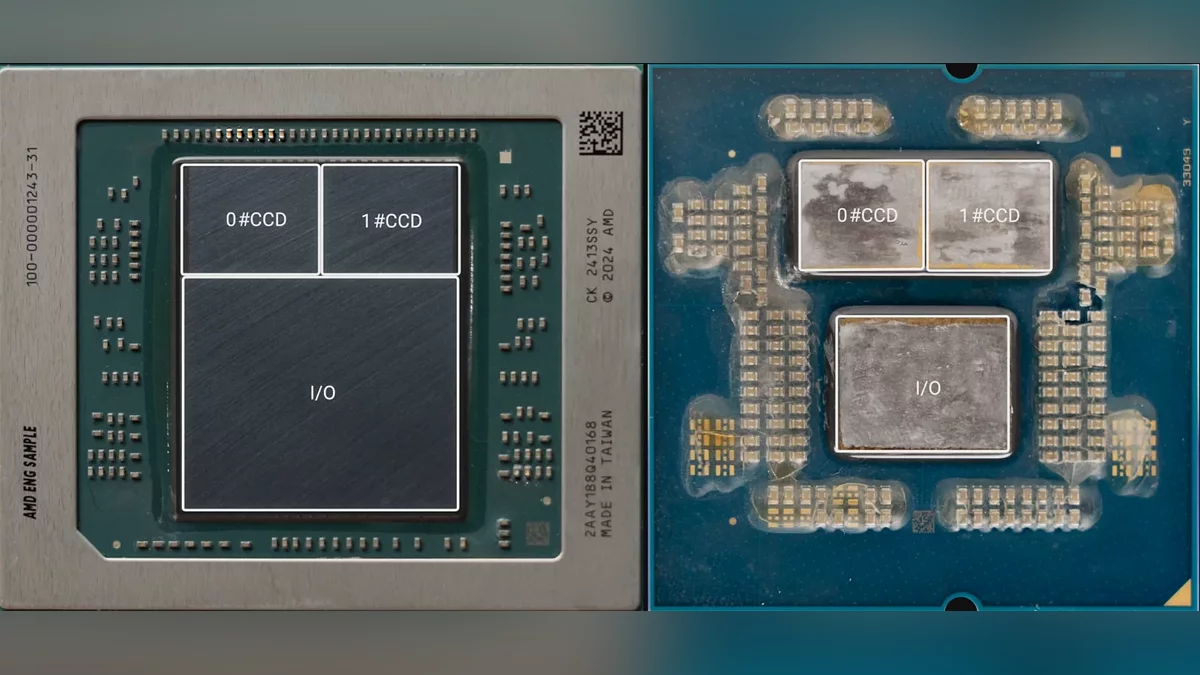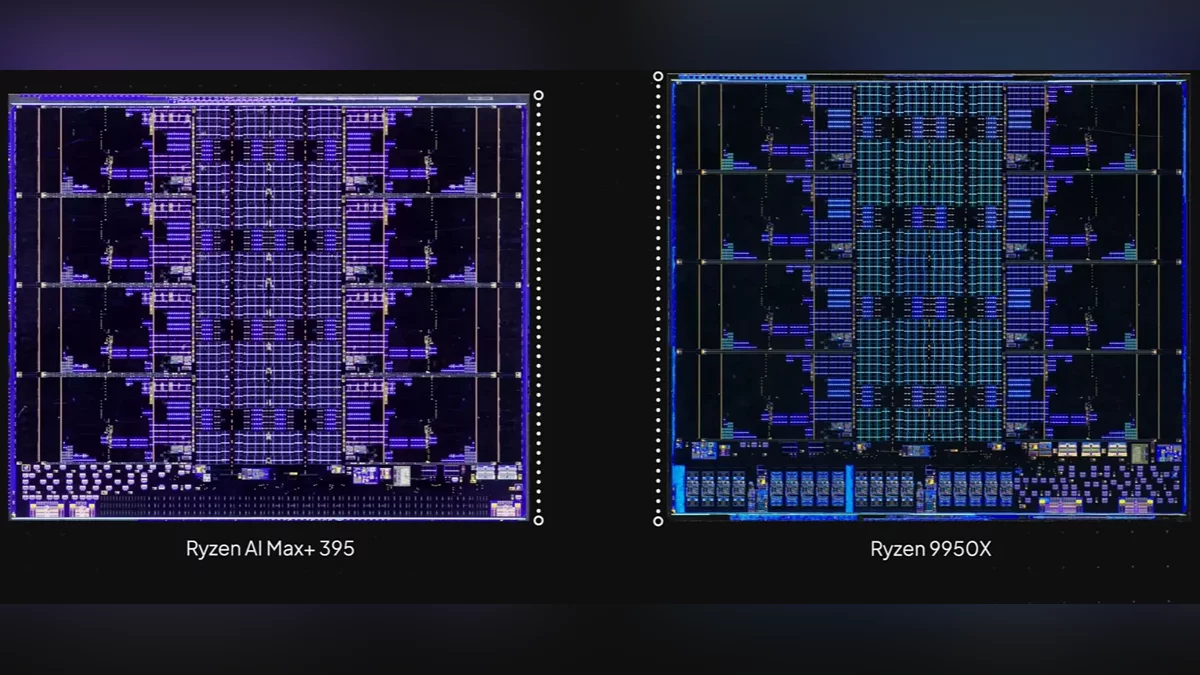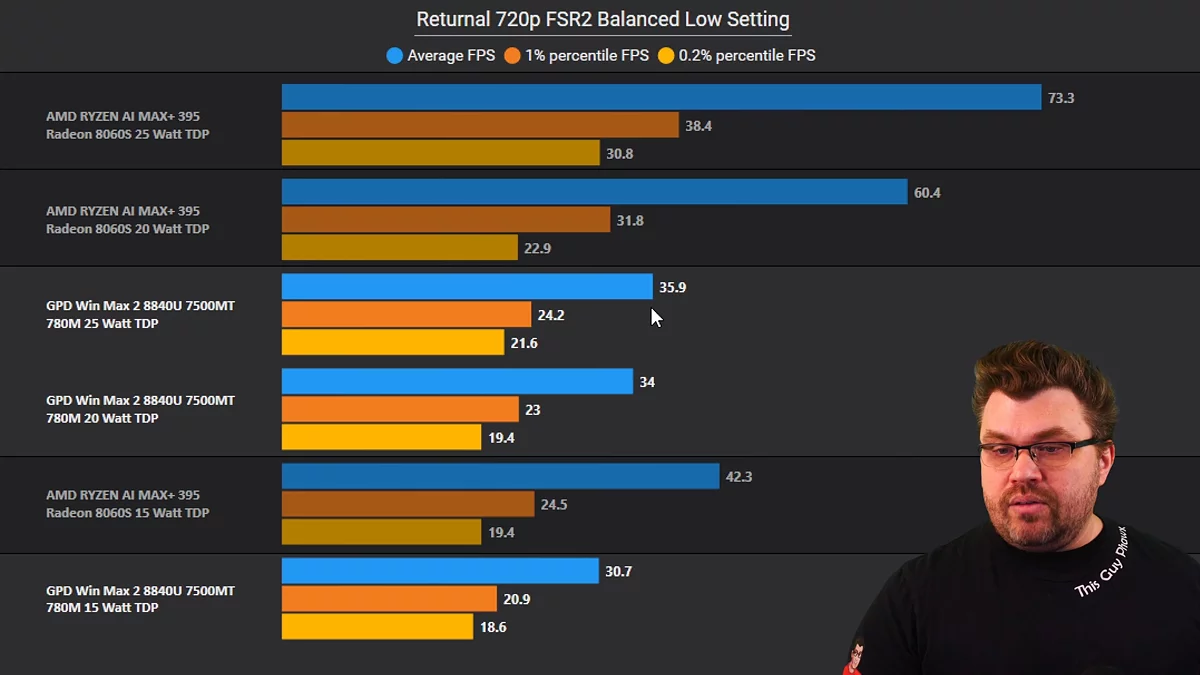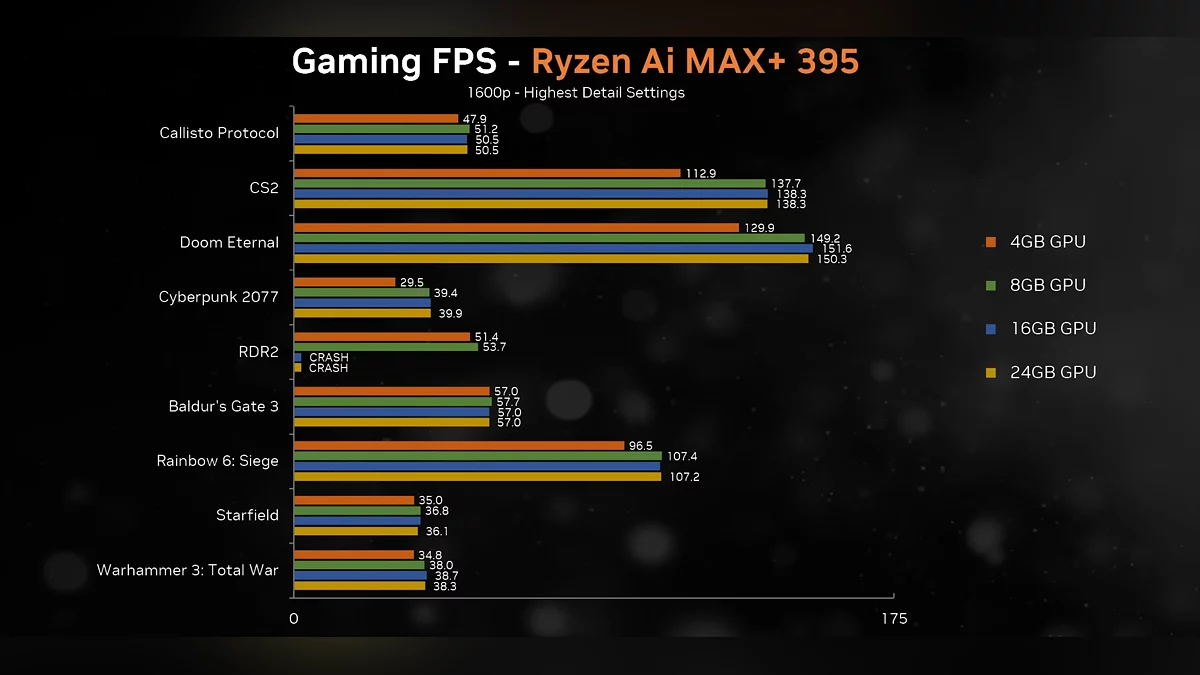A major milestone has just been reached in the tech world. Early reviews of the 2025 ASUS ROG Flow Z13 gaming convertible, powered by the AMD Ryzen AI Max+ 395 APU, confirm that integrated graphics have caught up with entry- and mid-level discrete GPUs. As a flagship processor from the Strix Halo lineup, this chip represents a breakthrough that could redefine the landscape for compact devices and laptops.
The Ryzen AI Max+ 395 is the first APU with a chiplet design, featuring up to 16 Zen 5 CPU cores and Radeon 8060S integrated graphics with 40 compute units. This architecture allows it to rival discrete GPUs like the NVIDIA GeForce RTX 4050 and 4060, and in some scenarios, even approach the laptop RTX 4070 in performance. A key innovation is the use of TSV (Through-Silicon Via) technology in the APU’s die. According to Tony Yu, General Manager of ASUS China, this paves the way for future 3D V-Cache variants, potentially further boosting performance.
The Radeon 8060S integrated GPU in the Ryzen AI Max+ 395 delivers impressive results. With 32MB of Infinity Cache and 40 compute units, it not only matches but even surpasses lower-power versions of the RTX 4070 in some tests. This is made possible by optimized power consumption and an advanced cooling system in the ASUS ROG Flow Z13. Review benchmarks suggest that the Radeon 8060S performs on par with the 120W Radeon RX 7600M XT and the 65-75W RTX 4070 laptop GPU. This makes Strix Halo a game-changer for compact devices, balancing performance and energy efficiency.
Experts suggest that Strix Halo could mark the beginning of the end for low-power discrete GPUs like the GeForce MX series. Laptop manufacturers may shift toward high-performance integrated solutions, making APUs the preferred choice. The ASUS ROG Flow Z13 2025, featuring the Ryzen AI Max+ 395, is already being hailed as a next-gen flagship. Its predecessor, equipped with an Intel Core i9-13900H and an RTX 4070, is currently priced at around $1,900, while the new model is expected to launch at $2,000. Despite the premium price tag, the device is poised to become a hit among gamers and professionals who value both power and portability.
The Strix Halo series demonstrates that the future belongs to APUs capable of replacing entry- and mid-tier discrete GPUs. Now, the only thing left is to see how well this technology performs in real-world usage.

 Arkadiy Andrienko
Arkadiy Andrienko



